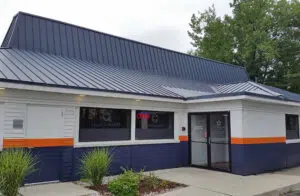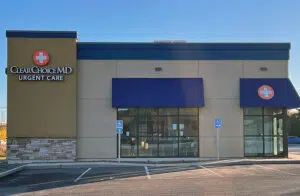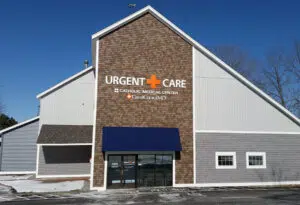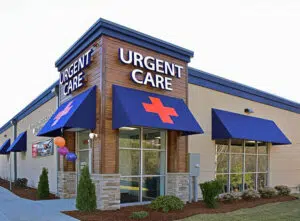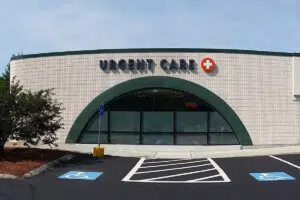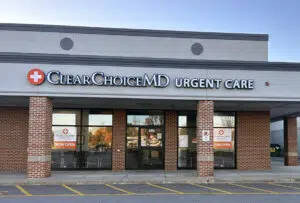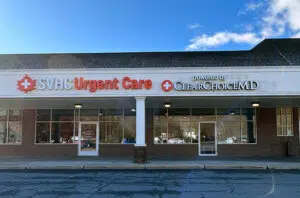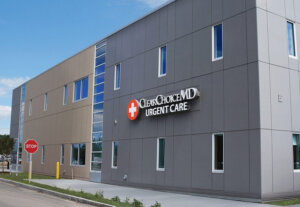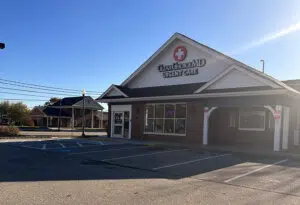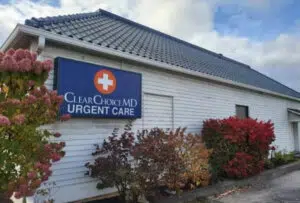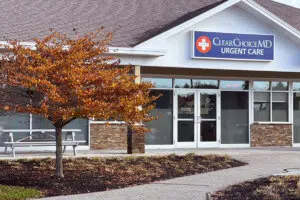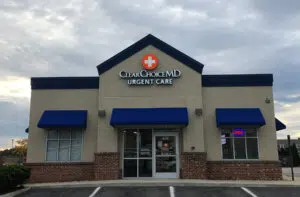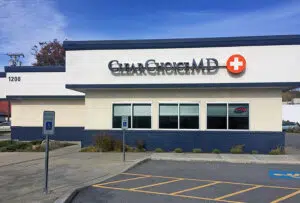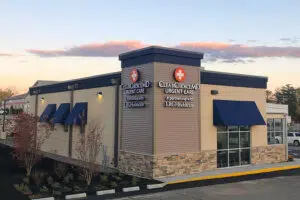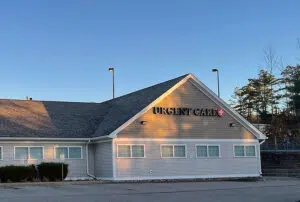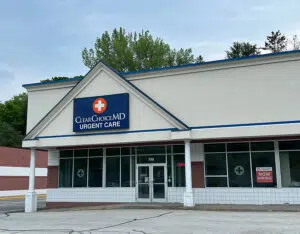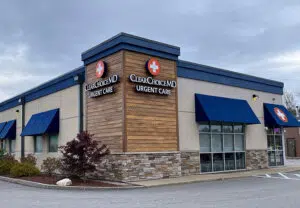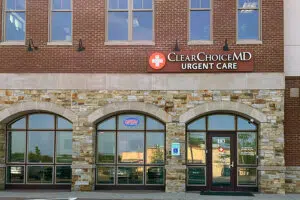What Is Urgent Care?
ClearChoiceMD’s urgent care facilities provide comprehensive care for non-life-threatening illnesses and injuries, catering to patients of all ages. Our centers operate on a walk-in basis, ensuring accessibility, and are open 12 hours a day, seven days a week. Experience the convenience and excellence of our fully equipped, state-of-the-art medical centers.
Additionally, we offer virtual visits, allowing you to receive expert care from the comfort of your own home. Whether you visit us in person or virtually, ClearChoiceMD is committed to providing exceptional care when you need it most.
Navigating Urgent Care vs. ER: Your Guide to Choosing the Right Care
Urgent care is not life-threatening care.
Understanding the difference between urgent and emergency care is essential when seeking medical attention.
For life-threatening injuries or illnesses, seeking immediate assistance at your nearest emergency room or by calling 9-1-1 is crucial.
ClearChoiceMD provides same-day services for a variety of non-life-threatening medical concerns. We bridge the gap when your primary care doctor is unavailable or waiting for an appointment is not feasible.
Hospital emergency rooms are equipped to handle complex or critical care, including conditions such as heart attacks, strokes, traumatic injuries, and situations threatening life or limb.
If your sudden illness or injury is something you would typically address with your primary care doctor, choosing urgent care over the emergency room ensures you receive the appropriate level of treatment.
What is Treated at Urgent Care?
At ClearChoiceMD, we offer urgent care services for a variety of health conditions, including:
- Allergic reactions
- Sore throat and strep throat
- Common cold
- Pink eye
- Minor cuts
- Urinary tract infections
- Sprains, strains, and minor fractures
- Headaches
- Minor burns
Trust ClearChoiceMD for comprehensive treatment of these and other non-life-threatening medical concerns.
The Benefits of an Urgent Care Visit
ClearChoiceMD Urgent Care provides numerous benefits for individuals of all ages.
Here are four key advantages of our urgent care centers:
- Accessibility:
ClearChoiceMD urgent care centers are conveniently located in Maine, Massachusetts, New Hampshire, and Vermont, ensuring that wherever you are, you're never far from the urgent care you require. - Convenient Hours:
Our urgent care centers operate from 8 a.m. to 8 p.m., seven days a week, without the need for appointments. Simply walk in whenever you need medical attention. - Prompt Service:
Unlike overcrowded emergency rooms with lengthy wait times, ClearChoiceMD prioritizes timely care. Our providers and clinical staff strive to see you promptly, ensuring you receive the attention you need without unnecessary delays. - Virtual Visits:
Experience the convenience of virtual healthcare visits from the comfort of your own home. With ClearChoiceMD's virtual visits, you can receive expert medical care without leaving your doorstep.
Urgent Care vs. Primary Care: Know the Difference
Urgent care and primary care offer similar services but serve different needs.
Urgent care is accessible for immediate needs when your primary care provider is unavailable, ensuring prompt attention.
On the other hand, primary care is essential for routine health checkups, focusing on preventive care and early detection of serious illnesses and chronic conditions for long-term well-being.
Understanding Urgent Care Costs
The typical cost of urgent care, without insurance or self-pay, ranges from $130 to $180. However, urgent care copays are often significantly lower if you have health insurance or Medicaid.
This base cost is supplemented by additional services such as X-rays, injections, stitches, medications, or bone casting.
In contrast, visiting an emergency room costs approximately $1,300 in addition to any extra services required.
ClearChoiceMD: Your Family’s Trusted Destination for Quality Urgent Care
Now that we've explained what urgent care is, we trust you understand its importance compared to going to the emergency room or seeing your primary care doctor.
The ClearChoiceMD team stands ready to address your family's health needs promptly.
With multiple urgent care centers across the Northeast, each equipped to provide expert care for various non-life-threatening injuries and illnesses, we ensure accessible healthcare when you need it most.
Our doors are open seven days a week, with no appointments necessary. Save your spot in line and visit ClearChoiceMD today for the immediate care you deserve.


